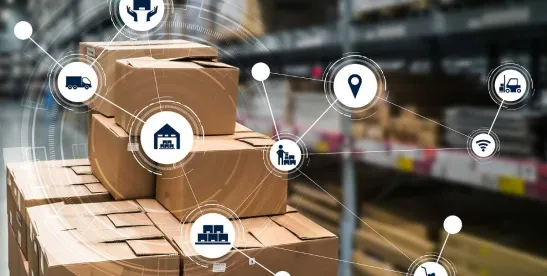Introduction
The importance of building technology-driven manufacturing businesses with an ecosystem focus—i.e., a comprehensive view of the complex network of suppliers, partners, and customers in a market—emerged as a critical theme for the manufacturing sector in 2024. From software-defined vehicles to electrification to digital health, companies seeking to rapidly commercialize technologies are espousing the value of a network of partnerships.
In particular, companies are emphasizing stronger connections and partnerships throughout their ecosystems to get solutions to customers faster and with greater cost efficiency. They are similarly looking to government as a valuable partner to help smooth the transition to the next generation of technologies. The benefits of a greater emphasis on partnerships are clear: improving supply chain resilience; creating more opportunities to de-risk technologies early on in the development process; and organically identifying customer pain points to incorporate solutions to these pain points in the technologies.
Technology Trends
Among many areas in which manufacturing-related technologies are advancing, three key trends stand out: software-defined vehicles, energy storage/electrification, and sensors in everything.
Software-defined vehicle technologies involve building a software layer on top of vehicle components and hardware, so that the functions of those components can more effectively be monitored and controlled. For example, these technologies can allow for greater centralization of controls, modular systems that can be updated at the software level, and greater customization for improved user/driver experiences.
Energy storage and electrification trends include advancements in both battery/storage devices themselves as well as for the overall battery lifecycle. For example, solid-state battery technologies, along with more conventional lithium-ion batteries, are advancing in key performance factors such as energy density, safety, and lifespan. Battery recycling and other circular economy models are maturing to reduce overall waste. At the other end of the scale spectrum, the growth of public and private electric vehicle (EV) charging networks continues in conjunction with EV demand increases, and both centralized and decentralized/local energy storage solutions are also expanding in footprint.
Sensors are in everything, as the appetite for increasingly specific and robust data to support other technologies increases. In the automotive context, for example, more sensors are being incorporated into vehicles for functions such as component monitoring (to support software functions relating to those components) and computer vision and perception operations (e.g., LIDAR, radar, ultrasound, camera). Support for these sensors along with related communications and data processing will require corresponding increases in compute power and network resources on systems.
Common Challenges for Deploying these Technologies
Several themes emerge from these technology trends, which are accompanied by related challenges to be addressed and, ultimately, competitive advantages to be achieved.
- Space. From a mechanical perspective, integrating more electronic components into manufactured systems requires addressing size, weight, and power requirements to create room for those electronic components. To mitigate costly revamping of manufacturing processes, companies likely will need to also consider how to make these changes while keeping the same chassis/platform/form factor.
- Flexibility. From a software perspective, companies providing technology platforms need to make those platforms flexible enough to tie together the vast variety of sensors/data sources that OEMs are seeking to deliver applications and features for the end user. Key software considerations also relate to ensuring that the overall architecture is robust and secure enough to handle competing hardware resource demands, particularly where multiple safety-related applications may be operating simultaneously.
- Risk. It is capital-intensive to develop large scale manufacturing technologies, including electrification projects. This means that these technologies have a steep cost curve for technology development and adoption by customers, which manufacturers must be prepared to handle during the early stages of development. Further, in order to de-risk technologies, companies need to work through small scale deployments so that pain points can be identified and solved, before the technologies can be scaled up to a profitable level. In other words, companies developing electrification and other capital-intensive projects need to place greater emphasis on getting customers to take changes on novel/high-risk technologies, in order to work through the progression of technical and financial de-risking.
More broadly, companies seeking to pursue these projects with an ecosystem view must consider how to get their innovations out across their network of partners, suppliers, and customers in a manner that accounts for these challenges and points towards de-risking technologies from both engineering and financial perspectives. This may require greater awareness of complete supply chains and exactly which components/products are provided from or used by suppliers and customers, respectively.
Legal Risk Management for Technology Development
Several legal considerations have outsized significance for companies operating with this ecosystem view. To properly evaluate these considerations, companies should clearly define the scope of the relationship with each partner early in the process of establishing the relationship. In particular, companies should consider:
- Data Ownership, Privacy, and Security. The technologies described above depend on complex software systems that use critical system and user data. Just in the vehicle context, operations such as navigation, autonomous driving, and vehicle-to-everything (V2X) communication generate sensitive data including location information, driving habits, and personal user preferences. In view of greater complexity of their software systems and sources of data, companies should take care to track the way data passes through their systems, and establish boundaries/guardrails that take into account the sensitivity of data being managed, such as personal identifiable information (e.g., for medical devices), and whether the data relates to safety critical systems. When contracting with vendors for software solutions, companies should carefully consider if the representations, warranties, and indemnities provided by the vendors are consistent with the standards by which the companies and their customers/users expect to have data managed.
- Intellectual Property (IP). Companies rapidly developing technology will have more potential innovations to protect. Companies operating with the ecosystem view will have more frequent interactions with outside parties, and thus more potential events in which intellectual property and confidential information may be shared/exposed. To account for these factors, more robust processes are required to quickly identify IP, decide if it should be protected, and determine if confidentiality and IP ownership/allocation provisions are needed for interactions with outside parties. At an organization level, this may require engaging more cross-disciplinary teams across legal, engineering, and product management functions in order to direct IP questions to the right team and facilitate faster decision-making.
- Supply Chain Management. Implicit throughout this discussion of more rapid technology innovation and ecosystems is a more complex supply chain (which therefore can possess more points of failure). This means that typical supply chain considerations relating to managing disruptions, such as avoiding the “battle of the forms,” stating that time is of the essence and allocating responsibility for delivery delays, and structuring IP licenses to allow for flexibility when disruptions occur, are of heightened importance.
- Finance/Grant Reporting. All of the technologies discussed above are capital-intensive, requiring clear planning for technological and financial de-risking. Firms throughout the manufacturing sector are increasingly vocal about the role that government entities can play in creating financial resources and incentives to support de-risking efforts. At the same time, manufacturers and suppliers should ensure they properly review and follow through on reporting requirements and other obligations imposed with such grants and other financial resources. Similarly, when operating with the ecosystem view, companies should ensure that they properly manage obligations that flow to contractors and subrecipients.
Conclusion
As we look toward the future of manufacturing, technology trends across the sector are reshaping the landscape of the industry, and companies are accelerating these changes with a strong ecosystem of customers, partners, and suppliers. These innovations offer unprecedented opportunities for efficiency, customization, and sustainability, but also introduce a complex array of legal and operational challenges that must be navigated with foresight and strategic planning. The success of manufacturing firms in this new era will depend not only on their ability to leverage these technologies, but also on their effectiveness in rapidly implementing and adapting their risk management policies. The path forward will be defined by those who can balance technological ambition with meticulous risk management and strategic collaboration throughout their ecosystems, ensuring that they are well-prepared for the opportunities and obstacles that lie ahead.




 />i
/>i

